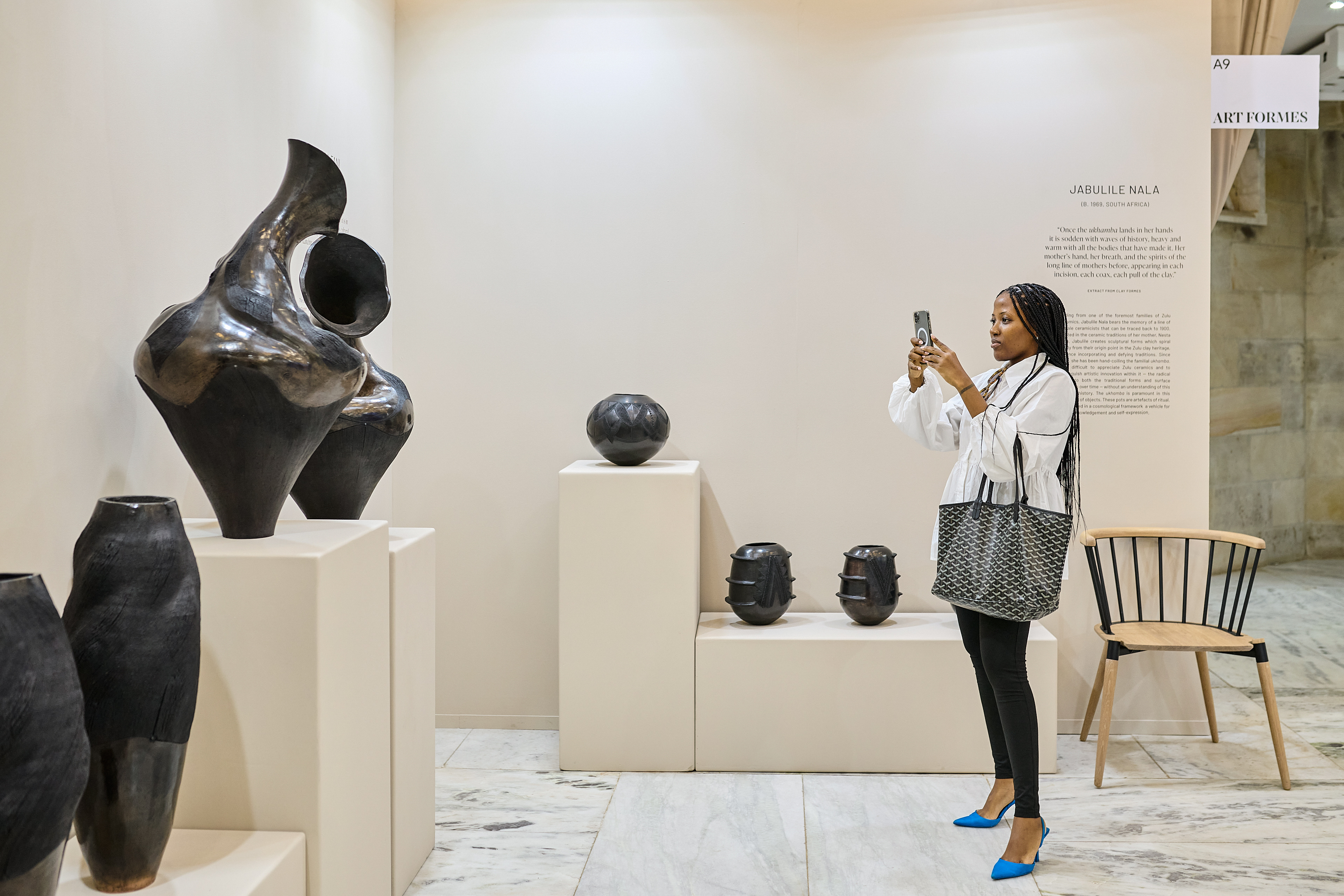ARAK Collection x Latitudes Critical Art Writing Workshop
---------
During RMB Latitudes Art Fair 2024, Doha-based ARAK Collection, ran a workshop on art writing. The loss of many newspapers and publications has led to a decline in arts coverage and the near extinction of art criticism, worldwide. Which is why initiatives such as this, which not only train young writers, but also provide a platform to publish their work, are invaluable.
 Photography by Anthea Pokroy
Photography by Anthea Pokroy
For three days, 11 selected writers engaged in critical discussions while crafting their personal reflections of the Fair, its art, vision and cultural capital. The workshop took place under the mentorship and guidance of renowned art critic Ashraf Jamal.
Below, we feature select writing pieces from the workshop.
Strangeness and Charm
By Donatella du Plessis
Many of the works on display at RMB Latitudes Art Fair exemplified the strangeness and charm of the beautiful bizarre in a venue so splendidly unorthodox that one might be forgiven for thinking it was designed for the very purpose.

Beyond Function: The Persistence of Clay
By Dineo Ponde
The similarity in all these artists' work was that they allowed the clay to just be “the thing itself” they encouraged it to transcend its practicality, they handled it in its enduring and dynamic nature, they explored its time-based and process-driven element, it pulled them in, and they let it.

Pathmaking and placemaking at RMB Latitudes
By Xanthe Scout Lardner-Burke
Art Fairs offer pathways of access to artists, exhibitors, and viewers – placemaking in an industry that so often hoards access. Latitudes serves to meet-you-half-way – to posit emergent work and spaces. Tim Ingold describes placemaking through path-making as “to be a place, every somewhere must lie on one or several paths of movement to and from places elsewhere”. Place-making is easier with people then, and lots of them. And it’s better on tiered ground.

Three afternoons at Latitudes: A Study on Buqaqawuli Nobakada and Kaleab Abate
By Dumisani Mnisi
I was intrigued by Abate's technique, the ability to mix mediums, creating depth through paint and drawing then reducing it to a flat finish demonstrating the helplessness and defeat of his subjects.

Critical Friend
By Ashraf Jamal
It is true that African art is distinctive. This is not because it is peculiarly ‘African’, but because it is intensively responsive to the fallout of slavery, indenture, Empire – matters that persist today.

Further Reading In Articles
African Artist Directory















